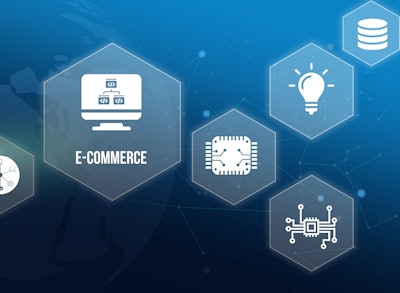
The holiday season is a make-or-break period for e-commerce businesses. According to Adobe Analytics, the upcoming holiday season in the U.S. is projected to see online sales reach $221.8 billion, marking a 4.8% rise compared to the previous year. As consumer demand surges, businesses must grapple with the complexities of inventory management, shipping logistics, and customer expectations. This challenge is compounded by ongoing supply chain disruptions, labor shortages and rising costs. The key to navigating this chaos and thriving through the holiday season lies in harnessing the power of artificial intelligence (AI) to optimize supply chain operations.
AI has revolutionized how businesses manage physical goods, enabling more agile, responsive and efficient supply chains. As we move towards the peak shopping season, e-commerce companies must adopt these intuitive technologies to help them streamline their operations to stay competitive. And if they don’t? It’ll be clear soon who will thrive and who will fall behind across e-commerce and manufacturing.
The Supply Chain’s Main Challenge: Managing Uncertainty
E-commerce businesses face unique challenges in managing their supply chains. The 2024 State of Supply Chain Sustainability Report from MIT Sloan and the Council of Supply Chain Management Professionals (CSCMP) shows that 63% of supply chain professionals expect disruptions to remain a key challenge over the next two years, driven by factors like geopolitical instability, environmental issues, and pandemic-related backlogs. They must keep track of inventory, forecast demand, and ensure they have the right products in stock, all while meeting customer expectations for fast and reliable delivery. Over the past few years, global supply chain disruptions have only made this task more difficult. From shipping delays to material shortages, businesses are constantly working to adapt in real-time.
But the most pressing issue for small and medium-sized businesses (SMBs) is balancing supply chain demands with their limited resources. This is where AI becomes essential, especially for SMBs that need to move quickly and efficiently. It’s been great to see how AI helps these businesses take control of their supply chains by analyzing historical data, predicting demand, and automating processes to keep inventory levels optimal – and the businesses doing so are pulling ahead.
AI-Driven Solutions for Inventory Management and Forecasting
One of the most transformative applications of AI in the supply chain is in inventory management and demand forecasting. The traditional approach often involves manual tracking and static forecasting methods based on past sales. In fact, this 2024 report on Shopify found that 60% of SMB Shopify merchants face significant challenges in aligning inventory and production with fluctuating demand. However, this method falls short when there’s sudden surges in demand, like those during the holiday season. According to the same report, 94% of e-commerce merchants plan to incorporate AI into their business operations in 2024.
So, what does this look like? A great example of how they’re leveraging AI includes a mid-sized business that manufactures and sells handcrafted goods that is struggling to manage inventory across multiple sales channels. Using AI-powered tools, they could sync their sales data across platforms like Shopify and QuickBooks, allowing them to maintain a clear picture of their stock levels in real-time. This not only reduced their manual workload but also significantly improved their ability to meet customer demand during peak seasons.
AI and Supply Chain Resilience
AI also plays a crucial role in enhancing supply chain resilience. With geopolitical uncertainty, fluctuating transportation costs, and volatile material supplies, businesses need the ability to quickly pivot and respond to disruptions. AI-enabled platforms now help companies manage these disruptions by offering scenario planning tools, where AI can simulate various supply chain scenarios and offer recommendations on the best course of action. Whether it’s adjusting supplier sourcing strategies or rerouting shipments, businesses can make informed decisions rapidly.
For example, during a recent materials shortage, a company may be able to swiftly adjust their procurement strategy and find alternative suppliers without impacting production timelines or customer orders. This type of agility is critical, especially during the holiday season when timely deliveries are a top priority for maintaining customer satisfaction.
The Competitive Edge for SMBs Starts and Ends with AI
E-commerce giants like Amazon have long dominated the market due to their robust supply chain operations. However, AI levels the playing field for smaller businesses, enabling them to compete on efficiency and customer satisfaction. With AI-driven tools, SMBs can operate with the sophistication of larger enterprises while maintaining the personal touch that customers appreciate.
For SMBs managing physical products, from clothing to electronics, the ability to streamline operations, optimize inventory and meet customer expectations without being overwhelmed by complexity is a game-changer. This allows them to focus on what truly matters—delivering great products and experiences to their customers.
The Future of E-Commerce Supply Chains
As we look ahead, AI will continue to drive innovation in supply chain management. Companies are now constantly exploring new ways to help businesses operate more efficiently. This includes developing more sophisticated AI-driven forecasting tools, integrating with emerging technologies like blockchain for better traceability and enhancing software capabilities to provide real-time insights at every step of the supply chain.
For e-commerce businesses preparing for this holiday season, the message is clear: AI is here to stay and those implementing it will pull ahead. Those who embrace it this season will be well-positioned to not only survive the challenges of holiday sales but thrive in the face of uncertainty going forward. As more businesses adopt AI, the future of e-commerce will be defined by efficiency, agility and resilience. The holiday season is an opportunity for businesses to shine, and with the right AI-driven tools in place, they can turn this season’s challenges into success stories during a historical first: a holiday seasoned backed by AI.




![Top Tech Logo Vertical [color]](https://img.sdcexec.com/files/base/acbm/scn/image/2024/11/top_tech_logo_Vertical__color_.672d2a7c2733d.png?auto=format%2Ccompress&bg=fff&fill-color=fff&fit=fill&h=167&q=70&w=250)














